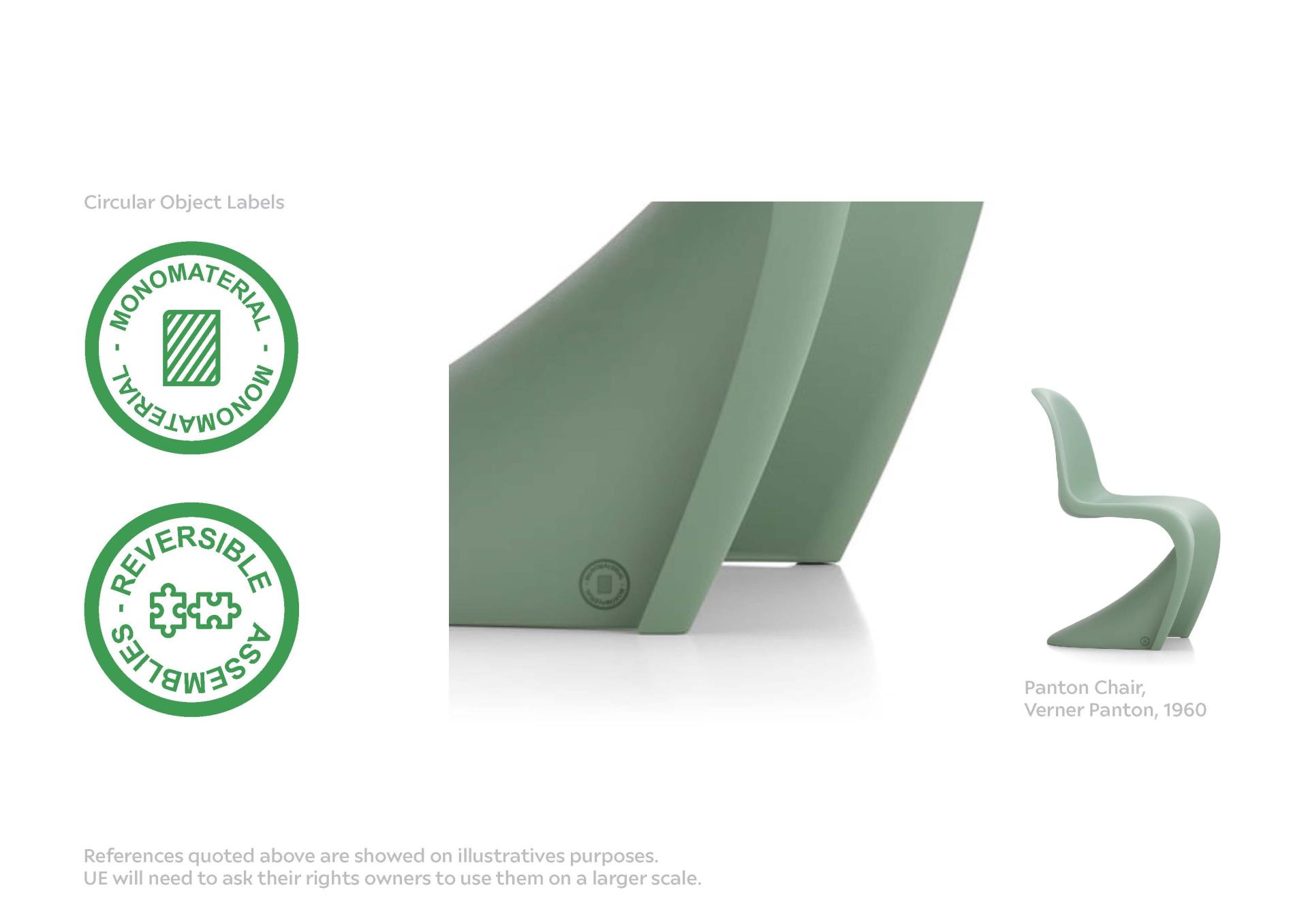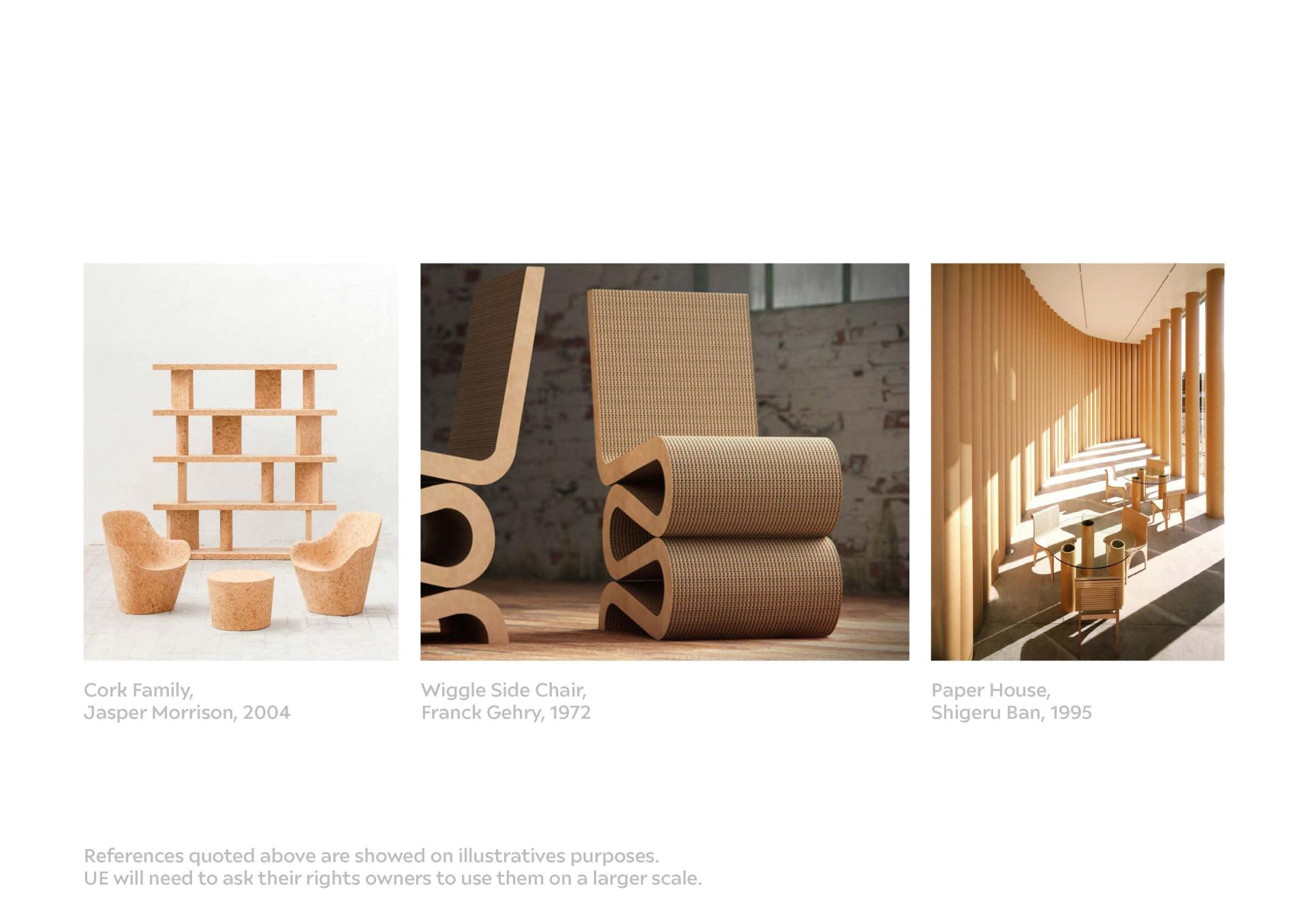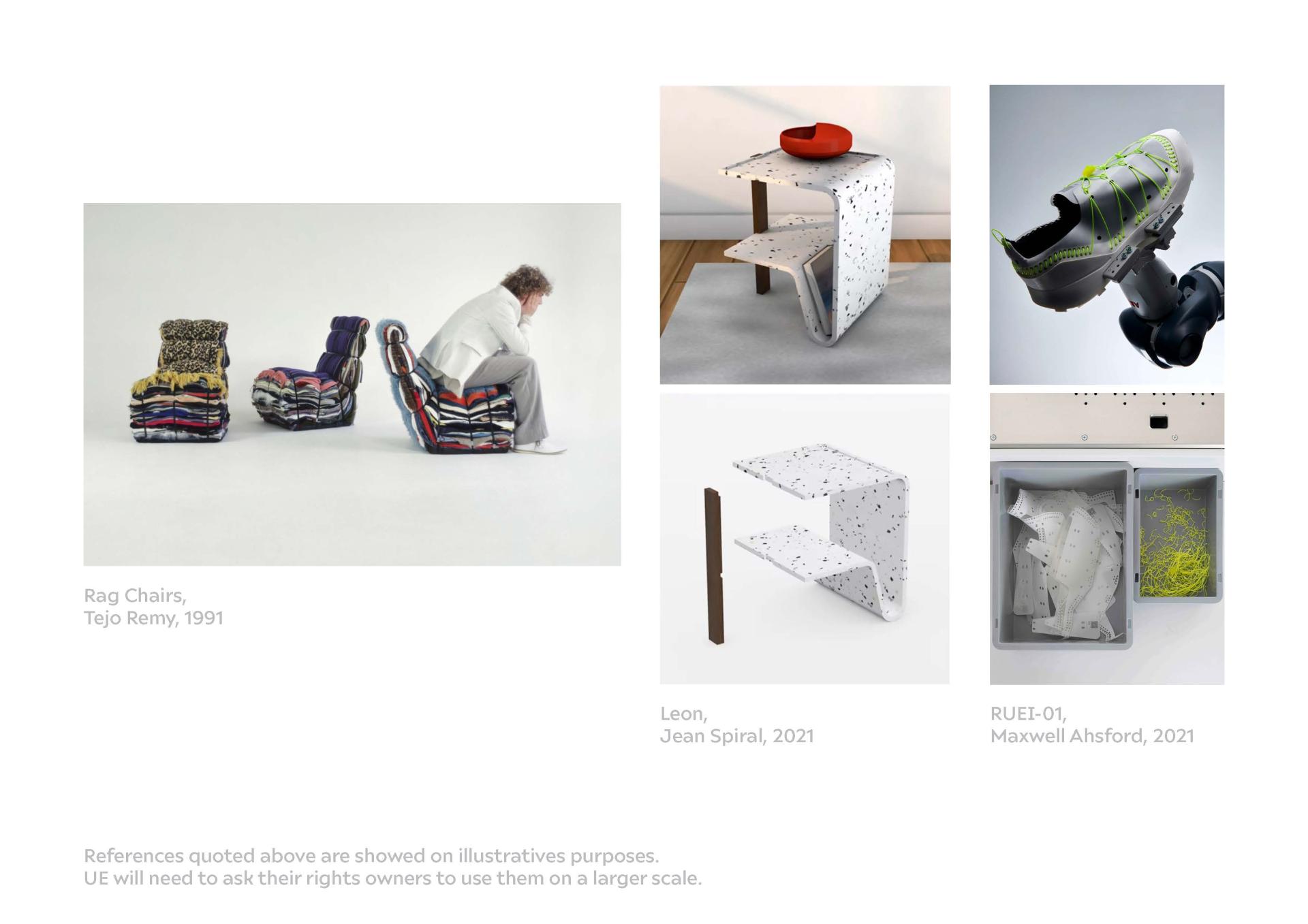Circular Object Label
Basic information
Project Title
Full project title
Category
Project Description
How to guarantee an object to be recycled in a system which does not recycle all what we collect ?
The Circular Object Label is a European label associated with conception and manufacturing techniques linked to existing sorting and recycling facilities which are also technically, economically and locally accessible thanks to precise specifications operating into the object conception and assembly. Thus, we can guarantee that labelled objects will be sorted and recycled through those channels.
Geographical Scope
Project Region
Urban or rural issues
Physical or other transformations
EU Programme or fund
Which funds
Description of the project
Summary
Today, we do not recycle every waste we collect. The recycling constraints and limits appear when it comes to separate materials in objects. Certain types of multi-materials objects (made of multi-parts using different materials impossible to separate, composite materials made of a material blending or that have received a chemical surface treatment) are not recyclable because each materials has to be recycled differently which forces us to sort them in order to treat them separately.
For instance, a plastic bottle is not recyclable if we leave the cap screwed on because it is made with different material (the body is in PET while the cap is in PEHD). Another example is our shoes composed of many different materials assembled with glue (non-reversible) in addition to stitches (reversible).
Currently, le Möbius Strip tries to organise these recycling channels and guide the user. We apply it to objects called “recyclable”. However, It shows that the materials from the object are recyclable but not the object itself. So the Möbius Strip does not guarantee at any time the object to be sorted and recycled as it can be too expensive, technically or logistically complex to decompose it. Because it's a life cycle final step, recycling possibilities are submitted to the conception method.
The Circular Object Label is a European label associated with conception and manufacturing techniques linked to existing sorting, recycling facilities or technically, economically and locally accessible. Both Möbius Stripe and The Circular Object Label would coexist as two different commitments levels more or less supportive.
Two topologies of implementations appear compatible for an efficient and cost-effective recycling process both regarding the material and economical aspects:
- Monomaterial objects
- Objects with reversible assembly modes
These topologies guarantee that the labelled objects can be sorted and recycled through the existing channels.
Key objectives for sustainability
By promoting and enhancing objects meeting precise design and implementation criteria guaranteeing their decomposition and recycling, the material used becomes persistant and sustainable in a circular perspective. Then, recycling channels are reinforced and become more accessible because they are technically simpler. Indeed, the conditions for obtaining The Circular Object Label guide or prohibit manufacturing and design methods to match with our real recycling system.
To obtain the label, objects must be implemented according to the following criteria organized in two main parts, each associated with a specific sub-label:
1 - Monomaterial objects :
Objects made from a single recyclable material without needing to decompose them or separate different materials/parts. These materials must be sustainable, environmentally friendly (in means of harvesting and production) and recyclable. Materials with a recycling pathway are:
- Glass
- Metal (ferrous and non-ferrous metals)
- Plastic (bio-based thermo-plastics)
- Natural materials (wood, cork, paper, cardboard, cellulose, wax,...)
2 - Objects with reversible assembly modes :
Objects where different parts can be easily separated thanks to reversible assembly methods. Allowed methods are:
- Sewing/Lacing
- Nesting
- Folding
- Weaving//Knitting
- Pinching
- Screwing
These design methods pre-exist to The Circular Object Label. The Label appears to be a way to promote and standardise these techniques for a more transparent and reliable recycling process. Indeed, the current recycling paradigm do not allow us to track our waste: we do not know to which technical specifications they have answered or not, which prevents us from recycling them. There is no room for doubt, as an error can block an entire recycling chain. For example: a potentially badly sorted container filled with waste is rejected and goes to incineration because of only one badly sorted waste than would represent less than 1% of the container content.
Key objectives for aesthetics and quality
Obviously, the choice of materials and technical processes must be in line with the purpose of the object. In fact, a balance must be kept between the end (the final goal of the object) and the means.
For the two types of design considered in The Circular Object Label, materials must not have endured any surface treatments (resins, lacquer, paint, varnish), assembly treatments (glue, lamination, layering and composite materials) and chemical products (additives, adjuvants, fillers) that would make the separation of the materials irreversible.
All of these criteria implementations result in an honest object (in reference to Dieter Rams' Good Design) that manifest for what they are with unaltered and authentic materials. This brings back a healthier and more sensitive relationship to the object through their simplicity and legibility of form by going straight to the point.
Also, the life cycle of the object is set at the same level as the object itself by directly taking part in it. This creates a trust relationship thanks to the transparency provided by The Circular Object Label.
Key objectives for inclusion
By simplifying the processes of decomposing and sorting materials, these steps become accessible and can be carried out efficiently and cost-effectively by sorting agents. This approach to technical accessibility is coherent with the initiatives of work-based social reintegration centres. Indeed, at a local level, within a sorting spaces dedicated to labelled objects, these could be decomposed and sorted to be integrated into our existing recycling channels.
Also, simplifying the technical sorting devices and processes, allows the creation of new work accessible to the greatest number of people in line with the social reintegration principle. The Circular Object Label highlights the qualifications of the agents trained to be aware about these emerging practices.
In addition to social integration through sorting work, the label aims to guarantee users a virtuous and sustainable life cycle for their objects. Through the aesthetics and therefore the use induced by the label criteria, objects life cycle is materialized and becomes concrete.
Physical or other transformations
Innovative character
The innovation of The Circular Object Label appears in the new recycling paradigm set. Indeed, from the conception stage, the object has been thought out, back and forth between aesthetics and techniques having in mind the virtuous means of reusing the material. By choosing a typology of processes oriented by the label (monomaterial or reversible assemblies), the object becomes sustainable without calling into question its use and aesthetic.
We are talking here about a method of designing and implementing the object having in mind its end of life in relation to its use, but not in relation to its material, which - being linked to the circular economy - becomes sustainable.
In our everyday life, these constraint implementations in the design of objects are not synonymous with a degraded or less efficient use. The choice of assembly processes and materials is therefore made with regard to the use by choosing adapted among those stated by The Circular Object Label.
As the basic material from the object past life has not been mixed or polluted by different treatments, it remains intact and limits the potential degradation linked to its recycling. This raw material then becomes a secondary raw material and so on as it is used.
In the end, the label re-establishes a relationship of trust and awareness between the object and its user by communicating the virtuous impact of the object life. Still linked to the user, this time as an actor within his cycle during the recycling stage, with work-based social reintegration.



